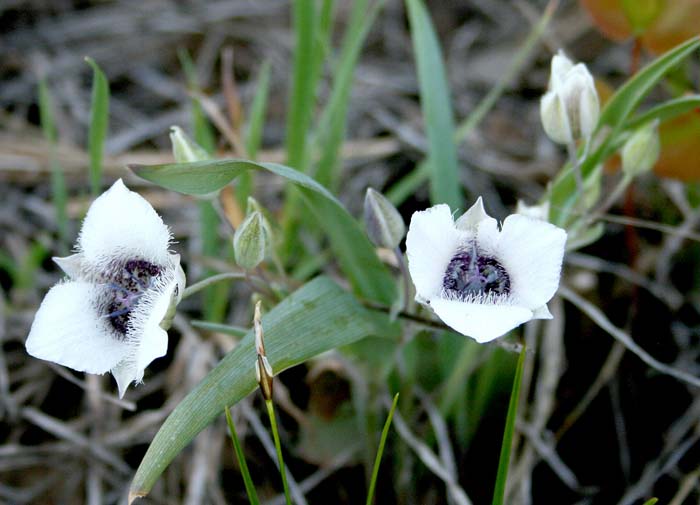Bloomin’ Blues | Higher Blue Mountain elevations reveal stellar wildflowers
Published 5:00 am Saturday, May 9, 2020

- Elegant Cat’s Ears, Calochortus elegans.
With the really warm weather and the numbers of plants blooming at lower elevations, I decided it was time to check more of the higher elevations. We turned off Interstate 84 at Spring Creek Road in the Blues, and were rewarded for the effort near the (closed) Spring Creek Campground. Below are five great spring flowers that rank among the most stellar wildflowers in the Blues.
Nuttal’s Delphinium (Delphinium nuttalianum): Nuttal’s delphinium is by far the most common of the seven species in Northeast Oregon. In the coming two to three weeks there will be meadows full of this blue-purple plant in bloom, especially at the higher elevations.
Douglas’ Brodiaea (Triteleia grandiflora; formerly Brodiaeae douglasii): This plant has a single, erect, slender, leafless stem, topped with a single cluster of several trumpet-shaped blue flowers. Occasionally one can find them with white flowers or white with blue stripes, or with flowers all blue without stripes. The tall stem over a foot high make them easy to see in open meadows.
Piper’s Anemone (Anemone piperi): Here is a favorite of mine — a sure sign spring is here, and a plant that is both simple and beautiful. It is very common in shaded woods. It has a slender erect stem about 6-8 inches high, with three leaves in a single whorl at mid-stem, and each leaf divided into 3 leaflets. It has a single flower facing upward at the top, and soon after blooming white it begins to fade pink, ending a deep pink before dropping its petals.
Oregon Grape (Berberis repens or Mahonia repens, depending which botanist you ask): Yes, this is the Oregon state flower, and the governor’s official residence is Mahonia Hall in Salem. This species of Oregon grape is found low to the ground in woods throughout the Blue Mountains. Note, however, another species also called Oregon grape is Berberis aquifolium in the western half of the state and reaches several feet in height (as are those planted in Pendleton’s Roy Raley Park.)
Elegant Cat’s Ears (Calochortus elegans): This is one of the smallest of the Mariposa lilies. It is often hard to spot, being at the top of a stem about 4 inches tall, and among dense undergrowth in the woods. The flowers are about an inch across, with three broad white petals densely covered with white hairs, and with a center that is black or blue-black. They are stunning under a magnifying glass or hand lens.







